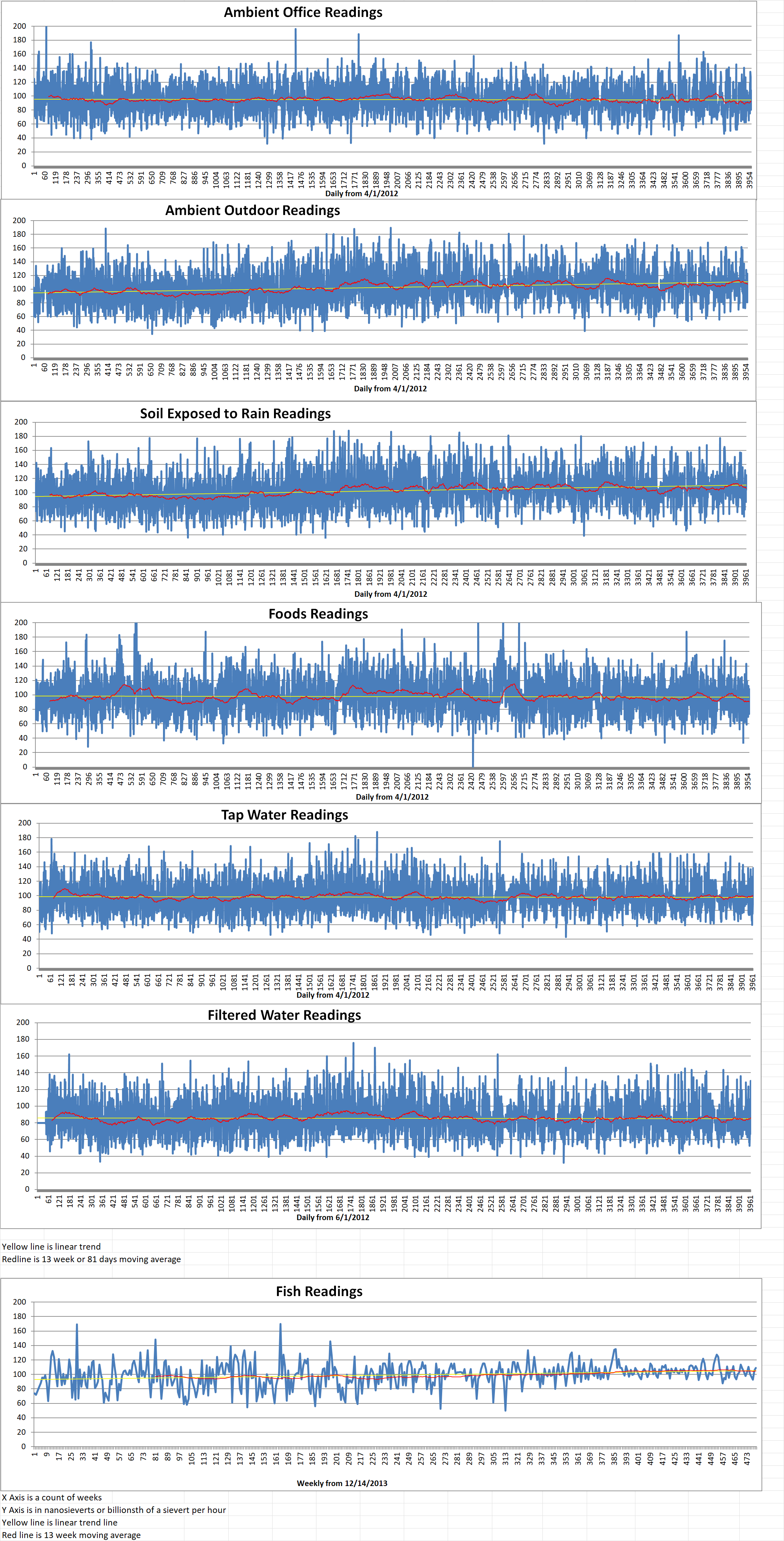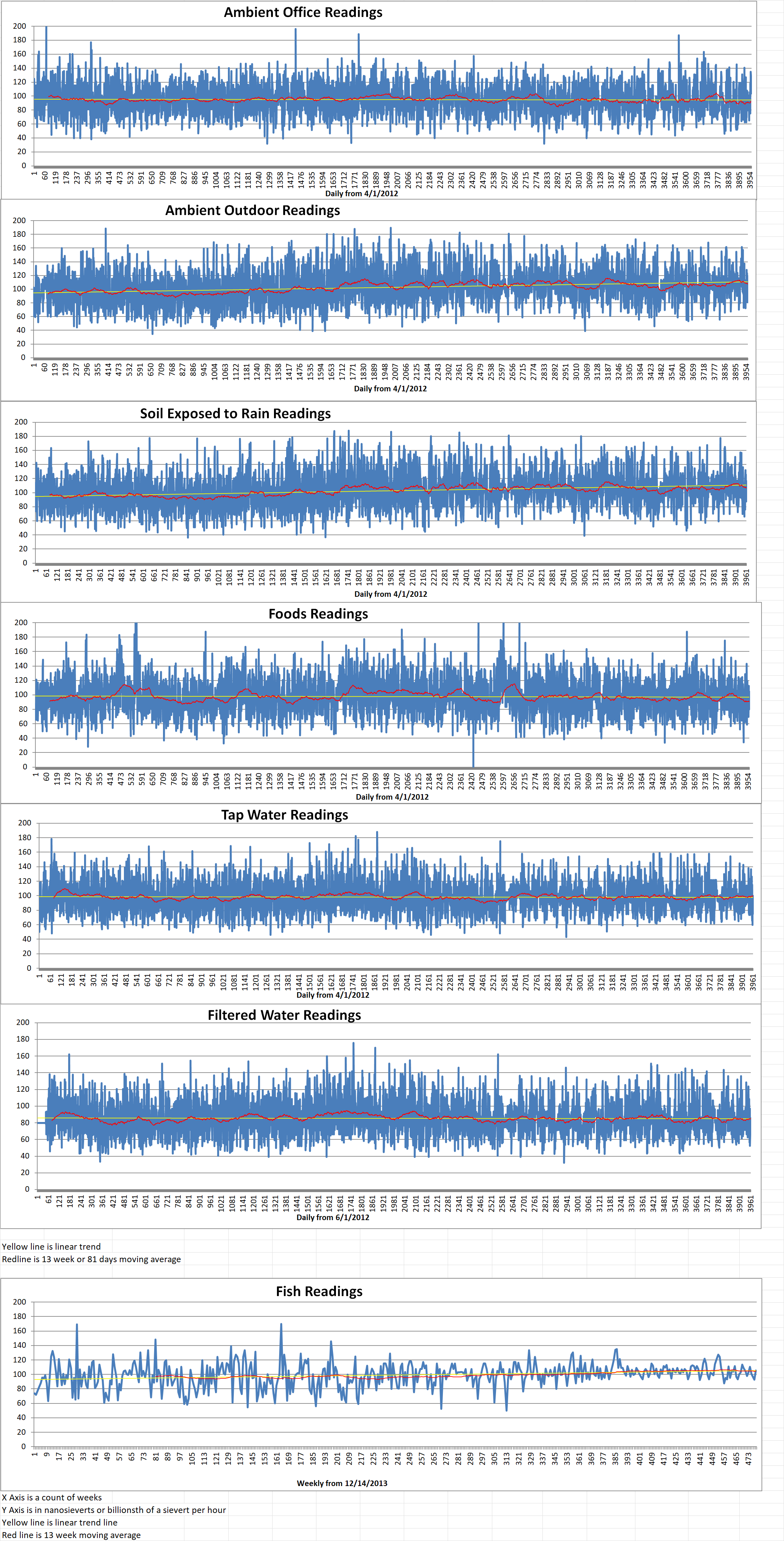Part 1 of 2 Parts
Augmented reality is a term that refers to the addition of computer-generated objects to the field of view of a person wearing special glasses that project images into their eyes. Along with virtual reality, AR has received a lot of attention in the technology press recently. While many uses have been suggested for AR systems, one use with great potential is industrial applications. Boeing has been using a system for years that allows a technician installing wiring in their passenger jets to see an image of the correct positioning of the wires in their field of view.
Researchers at Oak Ridge National Laboratory (ORNL) have developed a method of using AR to create accurate visual representation of ionizing radiation. The new technology has just been licensed by Teletrix, a Pittsburg, Pennsylvania based company that develops simulators to train radiological workers and radiological control technicians. ORNL announced the news of their work on May 4th.
A staff team at ORNL originally created an application called Virtual Interaction with Physics-enhanced reality (VIPER). Utilizing simulated radiation data and a gaming platform, the new technology divides a physical space into cubes. Each cube has a volumetric value of ionizing radiation by dose. That data is used to create a 3D image of gradient contours that is overlaid on a real-world view through the use of an AR headset. A person wearing the AR headset can move through a physical space with visual awareness of the contours of radiation. As they move, the device can calculate simulated, real-time exposure based on their movements. Last year, ORNL posted a video that demonstrates the use of the new technology in a laboratory setting.
Michael Smith is a nuclear space systems engineer at ORNL and a member of the development team for the new AR technology. He said, “We combined physics-based data with a gaming interface that provides a visual platform to make something invisible look and feel real—we took science and cinematography and brought them together.”
The AR development team includes ORNL’s Noel Nelson and Douglas Peplow of the Nuclear Energy and Fuel Cycle Division and former ORNL researchers M. Scott Greenwood and Nicholas Thompson. Originally, the AR project began as a one-year seed project funded under ORNL’s Lab Directed Research and Development program. The Nuclear and Radiological Protection Division of ORNL provided significant support.
Smith said “When it comes to training with ionizing radiation, [AR] is a superior and safer solution. Our team was at the right place at the right time to develop this technology. There was a synergy of hardware and software maturity coupled with an idea that’s been around a long time—the need to see ionizing radiation.”
Smith added that “Just by having a general impression of the spatial relationship of your body in a given radiation environment, you can decrease your overall dose based on really fundamental behavioral change. We can’t see ionizing radiation, so you just walk right through it. But once you have seen what the radiation in your working environment looks like, you can’t unsee it. AR provides a means to train people to have a better visceral understanding of how ionizing radiation behaves.”
Please read Part 2 next
Blog
-

Nuclear Reactors 1217 – Oak Ridge National Laboratory Is Working On An Augmented Reality System To Allow Workers To See Zones Of Radiation – Part 1 of 2 Parts
-

Geiger Readings for May 08, 2023
Ambient office = 108 nanosieverts per hour
Ambient outside = 122 nanosieverts per hour
Soil exposed to rain water = 125 nanosieverts per hour
English cucumber from Central Market = 108 nanosieverts per hour
Tap water = 138 nanosieverts per hour
Filter water = 130 nanosieverts per hour
-
Nuclear News Roundup May 07, 2023
SMR shows promise for campus use, study finds world-nuclear-news.org
Framatome awarded Ringhals modernization contracts world-nuclear-news.org
Xudabao 3 vessel passes hydrostatic tests world-nuclear-news.org
AFCONE and STUK collaborate on nuclear safeguards in Africa world-nuclear-news.org
-

Geiger Readings for May 07, 2023
Ambient office = 81 nanosieverts per hour
Ambient outside = 107 nanosieverts per hour
Soil exposed to rain water = 104 nanosieverts per hour
Tomato from Central Market = 74 nanosieverts per hour
Tap water = 90 nanosieverts per hour
Filter water = 82 nanosieverts per hour
-
Nuclear News Roundup May 06, 2023
US support for nuclear power soars to highest level in a decade grist.org
Japan, S.Korea eye visit by experts as Fukushima nuclear plant prepares water release English.alarabiya.net
Pentagon Leaders Reiterate US Policy To Deny Iran Nuclear Weapons iranintl.com
Federation of Korean Industries calls for Korea-US SMR alliance neimagazine.com
-

Geiger Readings for May 06, 2023
Ambient office = 104 nanosieverts per hour
Ambient outside = 119 nanosieverts per hour
Soil exposed to rain water = 116 nanosieverts per hour
Red bell pepper from Central Market = 104 nanosieverts per hour
Tap water = 94 nanosieverts per hour
Filter water = 84 nanosieverts per hour
Dover Sole from Central = 109 nanosieverts per hour
-

Nuclear Weapons 815 – British American Tobacco And A Subsidiary Are Being Sued By The U.S. Treasury Department For Violating Sanctions Against North Korea
Two tobacco companies have just agreed to pay a total of six hundred and twenty-nine million dollars for violating U.S. sanctions against North Korea (N.K.). This is the biggest penalty of its kind in the history of the U.S. Department of Justice (DoJ). The settlement involves British American Tobacco (BAT), the second-largest tobacco company in the world. BAT Marketing Singapore (BATMS) is a subsidiary of BAT and is also involved.
Brian E. Nelson is a U.S. Department of Treasury (DoT) undersecretary for terrorism and financial intelligence. He released a statement on April 25th which read, “For years, BAT partnered with N.K. to establish and operate a cigarette manufacturing business and relied on financial facilitators linked to N.K. weapons of mass destruction proliferation network in the process of enriching itself.”
BAT has agreed to pay the heavy penalty under a “deferred prosecution agreement” along with BATMS. BATMS pleaded guilty to conspiracy to commit bank fraud and violate the International Emergency Economic Powers Act (IEEPA).
According to information supplied by the DoJ, in 2007, BAT sold its shares in a joint enterprise with the state owned North Korean Tobacco Company to a third-party company. BAT declared that it had ended its business in North Korea (N.K.) However, BAT covertly continued operations in N.K. through its Singapore-based subsidiary. Prosecutors say that from 2007 to 2017, the third-party company earned about four hundred eighteen million dollars through the sale of tobacco products to N.K.
Separately, BAT and BATMS also agreed to pay more than five hundred million dollars in a civil settlement with the U.S. Department of Treasury Office of Foreign Assets Control.
Jack Bowles is the CEO of BAT. He recently said, “On behalf of BAT, we deeply regret the misconduct arising from historical business activities that led to these settlements and acknowledge that we fell short of the highest standards rightly expected of us.” BAT claims that it halted all operations in N.K. in September of 2017.
A separate case was unsealed on April 25th in which the DoJ charged a N.K. banker named Sim Hyon-Sop and two Chinese nationals, Qin Guoming and Han Linlin, for their involvement in a conspiracy to sell tobacco in N.K.
Prosecutors alleged that between 2009 and 2019, the three defendants supplied millions of dollars’ worth of tobacco leaf to N.K. They obfuscated their operations through the use of front companies. In total, they allegedly processed three hundred and ten transactions worth representing about seventy-four million dollars through U.S. financial institutions. These activities helped generate about seven hundred million dollars in revenue for N.K. manufacturers.
According to the Indictment, illegal tobacco sales, which includes cigarette smuggling, are an important source of funding for the N.K. regime. Allegedly, that money is being funneled into N.K.’s nuclear weapons program. N.K. carried out its first nuclear test in 2006. Since then, both the U.N. and the U.S. have placed a variety of sanctions on N.K. to cut off funding to its weapons program.
As dangerous as N.K. might be to the rest of the world because of its nuclear weapons program, the sale of tobacco products to N.K. will endanger the health of millions of citizens of that country. -
Nuclear News Roundup May 05, 2023
PEJ Could Announce Two Possible Sites For Second Nuclear Station This Year nucnet.org
Ukraine’s occupied Zaporizhzhia nuclear plant faces possible staffing crunch wowtv.com
Korea considers deployment of NuScale SMR for hydrogen production world-nuclear-news.org
Nuclear waste license cheered by southeast New Mexico leaders currentargus.com
-

Geiger Readings for May 05, 2023
Ambient office = 109 nanosieverts per hour
Ambient outside = 81 nanosieverts per hour
Soil exposed to rain water = 87 nanosieverts per hour
Ginger root from Central Market = 91 nanosieverts per hour
Tap water = 75 nanosieverts per hour
Filter water = 67 nanosieverts per hour
